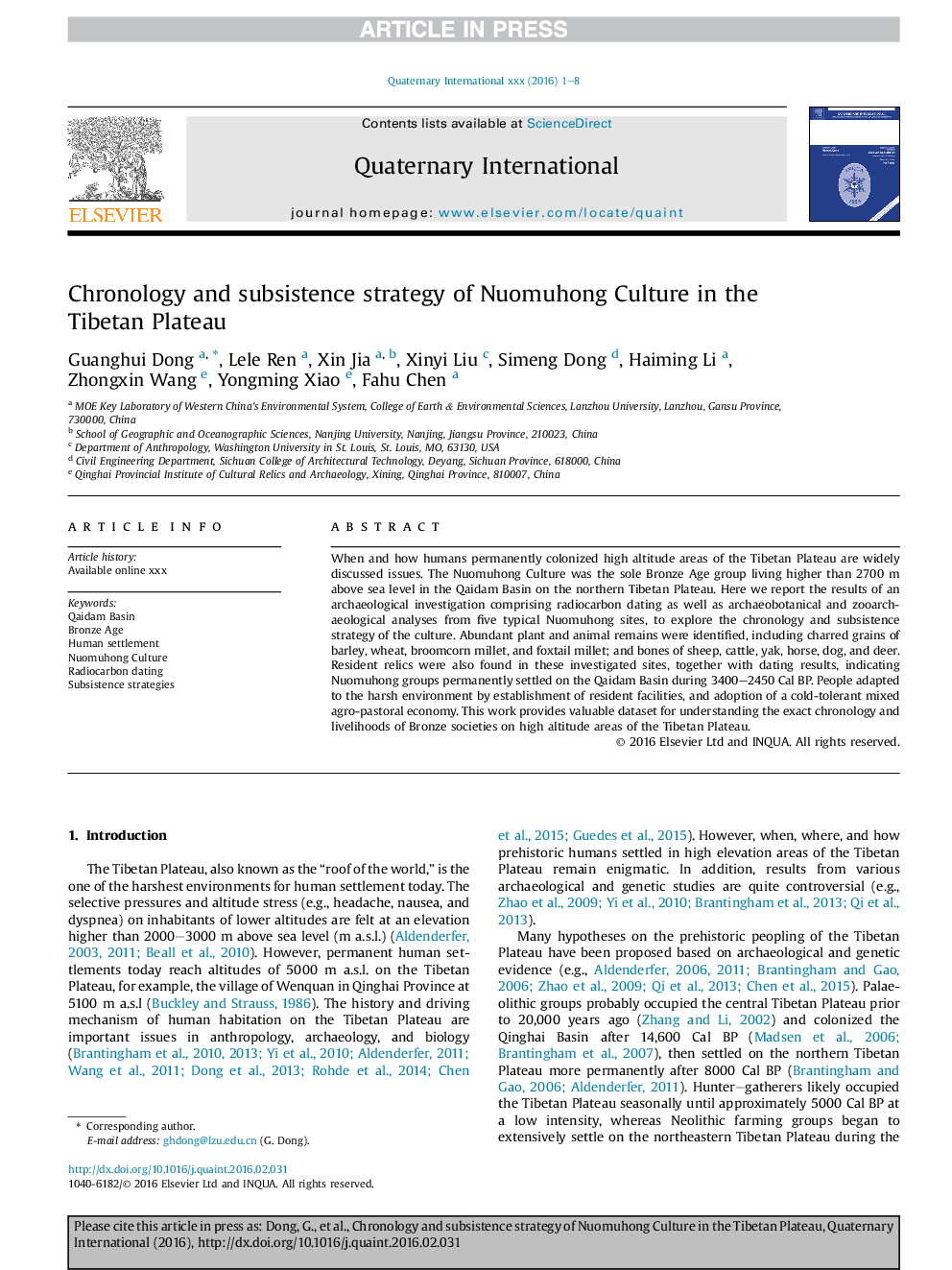| Article ID | Journal | Published Year | Pages | File Type |
|---|---|---|---|---|
| 5114105 | Quaternary International | 2016 | 8 Pages |
Abstract
When and how humans permanently colonized high altitude areas of the Tibetan Plateau are widely discussed issues. The Nuomuhong Culture was the sole Bronze Age group living higher than 2700Â m above sea level in the Qaidam Basin on the northern Tibetan Plateau. Here we report the results of an archaeological investigation comprising radiocarbon dating as well as archaeobotanical and zooarchaeological analyses from five typical Nuomuhong sites, to explore the chronology and subsistence strategy of the culture. Abundant plant and animal remains were identified, including charred grains of barley, wheat, broomcorn millet, and foxtail millet; and bones of sheep, cattle, yak, horse, dog, and deer. Resident relics were also found in these investigated sites, together with dating results, indicating Nuomuhong groups permanently settled on the Qaidam Basin during 3400-2450Â Cal BP. People adapted to the harsh environment by establishment of resident facilities, and adoption of a cold-tolerant mixed agro-pastoral economy. This work provides valuable dataset for understanding the exact chronology and livelihoods of Bronze societies on high altitude areas of the Tibetan Plateau.
Related Topics
Physical Sciences and Engineering
Earth and Planetary Sciences
Geology
Authors
Guanghui Dong, Lele Ren, Xin Jia, Xinyi Liu, Simeng Dong, Haiming Li, Zhongxin Wang, Yongming Xiao, Fahu Chen,
